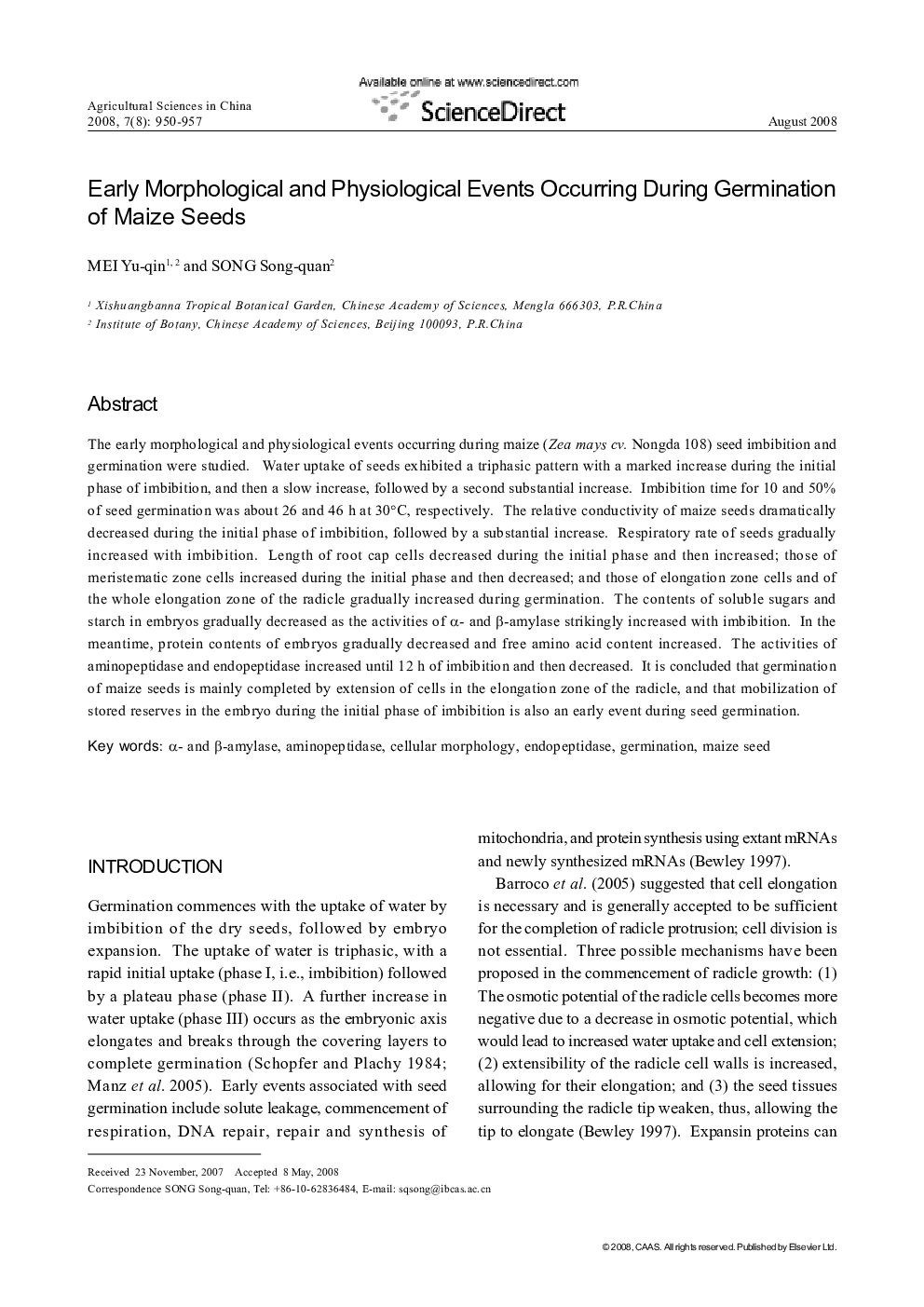| Article ID | Journal | Published Year | Pages | File Type |
|---|---|---|---|---|
| 4490637 | Agricultural Sciences in China | 2008 | 8 Pages |
The early morphological and physiological events occurring during maize (Zea mays cv. Nongda 108) seed imbibition and germination were studied. Water uptake of seeds exhibited a triphasic pattern with a marked increase during the initial phase of imbibition, and then a slow increase, followed by a second substantial increase. Imbibition time for 10 and 50% of seed germination was about 26 and 46 h at 30°C, respectively. The relative conductivity of maize seeds dramatically decreased during the initial phase of imbibition, followed by a substantial increase. Respiratory rate of seeds gradually increased with imbibition. Length of root cap cells decreased during the initial phase and then increased; those of meristematic zone cells increased during the initial phase and then decreased; and those of elongation zone cells and of the whole elongation zone of the radicle gradually increased during germination. The contents of soluble sugars and starch in embryos gradually decreased as the activities of α- and β-amylase strikingly increased with imbibition. In the meantime, protein contents of embryos gradually decreased and free amino acid content increased. The activities of aminopeptidase and endopeptidase increased until 12 h of imbibition and then decreased. It is concluded that germination of maize seeds is mainly completed by extension of cells in the elongation zone of the radicle, and that mobilization of stored reserves in the embryo during the initial phase of imbibition is also an early event during seed germination.
